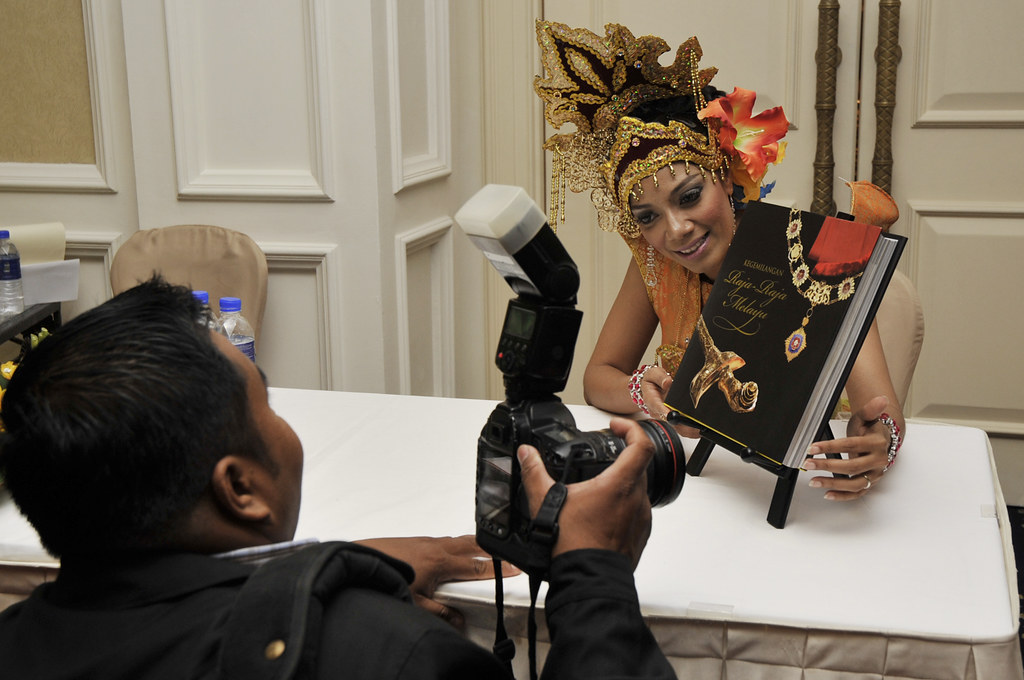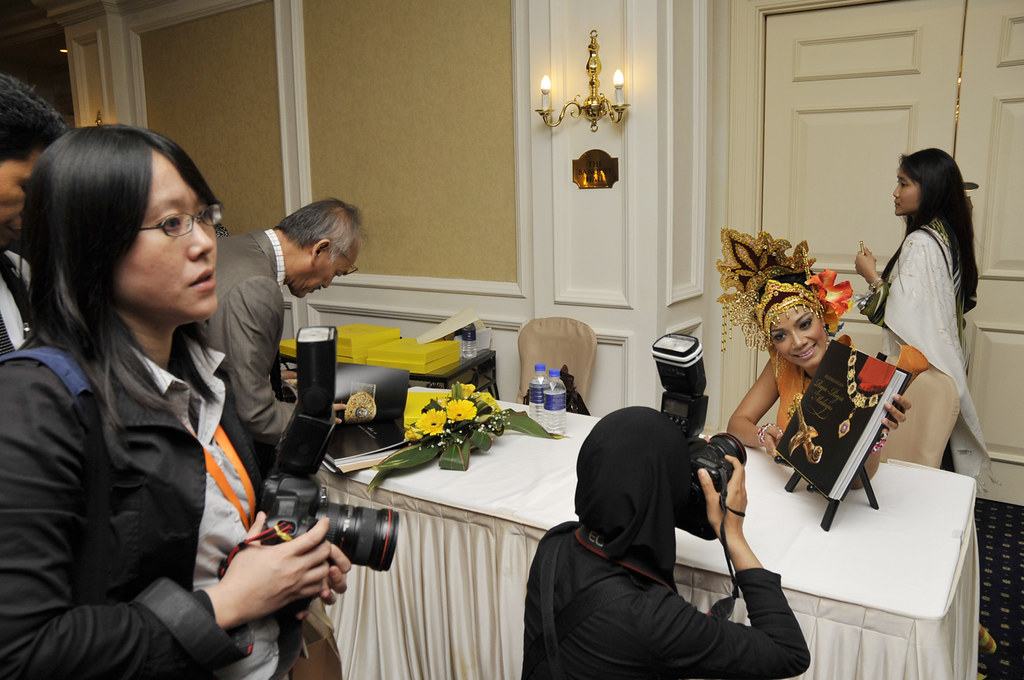Photojournalist and Bounce Flash
© 2011 Wazari Wazir | Photojournalist at Work With Bounce Flash
I’ve written an article not too long ago about why Photojournalist seldom use bounce flash when taking picture, most of the times, they will use direct flash for their assignment. As a Photojournalist myself I’ve write in the article about why we photojournalist don’t use a direct flash in certain circumstances. You can read about direct flash syndrome HERE
In that article, I’ve mention that we as a photojournalist captured a moment not create a moment, so that when dealing with a person especially high profile personality, we usually don’t have much time to “make a picture”. What we can do is just to find the right angle and composition in order to tell the story about the event better in a single picture if that is possible. You seldom see a news photography in a series of a pictures unless it is a photo essay or documentary where you can see a series of a picture from wide angle established shot until the tiny detail of the subject.
If you have read my previous article about that direct flash photography among photojournalist, you should by now understand that for most of the times we simply don’t have the luxury of time for bounce flash since when we bounce the flash to the ceiling, it will take quite a bit of time for the flash to fully recover to its full power for the next shot. We photojournalist like to shoot at a rapid speed, we like to shoot in burst mode since each and every frame will captured different mood and emotion, sometimes, the hand grip when two person shakes hands is not so firm, by using a rapid burst shot, we increase the possibility to get a good firm hand shake between two person with a direct eye contact between two of them, that’s why we need to shoot in burst and with direct flash, the flash will recycle a bit faster than if we choose to bounce the flash.
The photograph above were taken during the launching ceremony of the book entitled “The Majestic History of The Malaysian Monarchy”, it was officiated by His Majesty Seri Paduka Baginda Yang Di-Pertuan Agong Tuanku Mizan Zainal Abidin, King of Malaysia at Ritz Carlton Hotel here in Kuala Lumpur on 16th March 2011.
From the picture above you can see that all of the photojournalist use bounce flash technique to get the shot, why? Simply because in this case we have the time, we are not dealing with a high profile figure where we can’t asked them to pose like that for few minutes. We know that bounce flash will create much more pleasing picture, less shadows or minimizing the harsh shadows. We can shoot until we are satisfied with the photograph we took. As a photojournalist we know when to use direct flash and when to use bounce flash. Sometimes its irritate me and my other photojournalist friends when someone who are not in this business, who are not in this profession think that they know better than us. Instead of asking us why we did this and that, they assumed that we don’t know how to do our job.
I don’t have to share with you the end result of the photo shoot because I know that you can figure it out the outcome of the photograph itself judging from the way the Photojournalist took the picture. Sometimes we did make a picture, we did create a picture when the times is right, when we are not in a hurry. Just for your information we took this picture outside the ballroom just after The King leave the floor, after the ceremony end and people are busy wanted to know about the book and make a purchase. I like to share this kind of a picture, behind the scene pictures about how we photojournalist do our work because you will never see this kind of behind the scene pictures printed in our local newspaper.
Related Post : Why PRESS Photographer Use Direct Flash





One Comment
ashraf
“they” thought there’re the best,thats the prob when some butt-head only live in their own small tiny world.